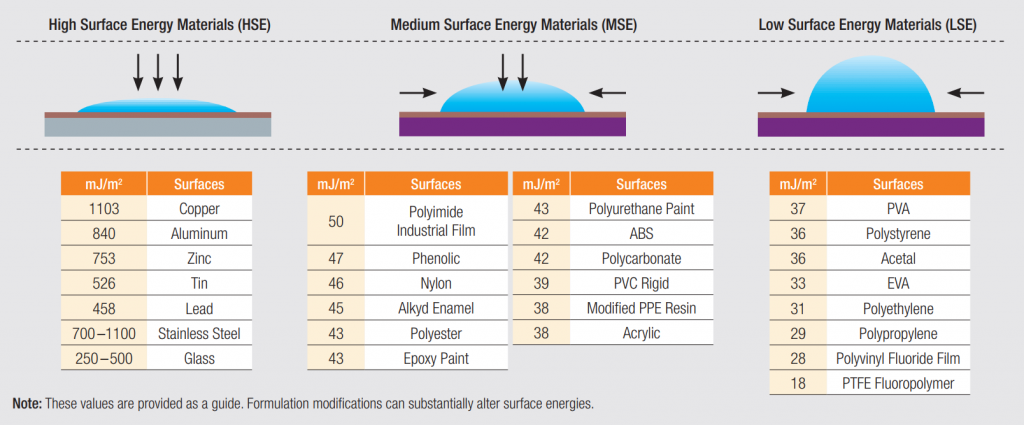Stickers & labels have varying strengths of adhesive because we all use them in different conditions.
The two factors that mostly define how strong the adhesive needs to be is; surface energy & how smooth the surface is.
A smooth surface is easier to stick to simply because more of the glue on the back of your sticker touches the surface.
Surface energy (aka surface tension) can be a complex subject, but basically, it's how sticky a surface is.
The higher the surface energy, the easier a glue will stick. This image shows how surface energy changes between materials:

If you're ever in doubt either ask your suppler of stickers & labels or go for a permanent adhesive (aka medium strength). It's the best all-rounder.
Want to find out more about surface energy? Read on.
Surface energy in technical speak is; the degree to which a material surface will repel or attract.
Imagine a freshly waxed or brand new car. The water beads and runs off easily. The wax creates a low surface-energy, so the water cannot stick to it.
The technical term is called 'wetting-out'. The easier it is for the adhesive to 'wet-out', the better the adhesion.
High surface energy values attract, whereas low surface energy values repel.
Materials with higher values bond better because good wet-out occurs of the adhesive.
Wet-out is an industry term to describe the flow of an adhesive over a material surface. Good wet-out ensures maximum contact and helps achieve a strong bond.
We measure surface energy in dynes per centimetre (Dyn/cm).
To get even deeper into this subject, Adhesives.org is a useful resource.


Comments
0 comments
Please sign in to leave a comment.